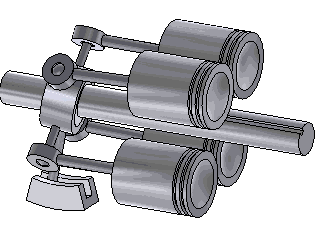So-called "Blue Gas" has been in development hell for awhile but nothing seems to have come out of it. I know the Regera mentions its use in the press releases, but Syngas typically ends with someone just making E85 again.
Biodiesel has to be laboratory clean to work, because all that algae is functionally the same creature. All the test batches that I read about died from common algae-eaters getting into the systems.
I hope fuel cells have a breakthrough, but honestly don't bet on it. FCEs problem right now is that hydrogen requires connections of over 15,000PSI and the best way to make hydrogen is through a fossil fuel instead of drinking water (which is a resource we are running out of), and that you're still having to use battery and motors to power the vehicle anyway.
GTwannaB said:
The other consideration is EVs. As cool.as the technology potential exists in these approaches. When will the research stop. When did steam.engines stop innovating?
To try and make a big friggin' wall of text as small as possible:
EV's big advantage is efficiency- you turn 80+% of all energy in the battery into forward motion, irregardless of whatever the hell you're doing (assuming you're using the motors most likely for the project, Brushless DC/Brushed DC/AC Internal permanent magnet). For Motors themselves, we recently (2012) had a big break with Synchronous Reluctance (SynR) motor technology which is in the Model 3 Tesla thanks to current computer controls and solid state technologies in sensors- I can link some papers if you'd like, but essentially it's a motor with super high efficiencies (93%!) that uses a fraction of the rare earth materials standard Internal Permanent Magnet motors use.
Battery is obvious, but essentially it was THE defining reason EVs were overtaken in the 1900s despite what Edison and Ford thought; lithium cells are a massive deal because they're one of the few batteries we know of that can be scaled to such a tiny size and still be comparable (when all efficiencies added up of course) to compete with gasoline. All we had in that era were flooded lead acid and Nickel-Iron, with each having serious drawbacks to things like ambient temperatures and Nickel-Iron being generally inefficient (not all batteries take 100% of the power you put in. Nickel-Iron would store 1 watt for every 3 watts put inside).
Finally, we have motor controllers. In the 1900s motor "speed" controls were literally by altering and changing voltages, and it wasn't until the 90s with modern computers could you actually get a pedal like a gas car. Instead, they had something like a "Low-Medium-High" speed all based on how much battery voltage was going to the motor from position- old electrics jerk, basically. From there, we also have made great strides in moving huge amounts of power as efficiently as possible thanks to Silicon-Carbon bits; we are basically trying to squeeze out every little percentage point possible and we're getting very good at it.
As for steam? We still use it every day, just that it's been outmodded by everything else except for specific use cases.





































